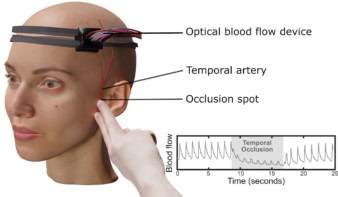A group of physicists and biologists in the US has extended the power of X-ray diffraction for imaging biological specimens. Jianwei Miao of the University of California, Los Angeles and colleagues have used X-rays to image single viruses, by separating the diffraction pattern of the virus particles from that of their surroundings. The researchers say that their technique could improve the imaging of a broad range of biological entities, from protein machineries to whole cells (arXiv 0806.2875).
X-ray crystallography generates images of the structure of crystalline materials by scattering a beam of X-rays from the electrons within a material and measuring the diffraction pattern that results. While it has been used since the 1950s to determine the 3D structure of many biological molecules, the technique requires that the materials studied be in crystalline form. Unfortunately, many biological specimens, including cells, organelles and viruses, are difficult or impossible to crystallize.
Scientists are currently developing a number of other ways to image biological samples, but each has its own drawbacks. Transmission electron microscopy, for example, can generate images with very high resolution, but multiple electron scattering from a sample means that specimens must be very thin (less than 0.5-1 µm thick).
Coherent beam of X-rays
The technique used by Miao and co-workers is called “X-ray diffraction microscopy”. This involves illuminating a non-crystalline sample with a coherent beam of X-rays. The intensity of the resulting diffraction pattern is measured and the relative phases of the X-rays within the pattern are recovered using an algorithm.
However, because the atoms within the sample are not arranged in a regular pattern the signal that results is very small. As a result this technique has been limited to imaging specimens that are at least a micrometre in size or those having a high molecular mass.
Miao’s group has adapted the technique in order to obtain diffraction patterns from single, unstained viruses whose molecular masses are about three orders of magnitude smaller than those of previous specimens. The researchers carried out their experiment at the SPring-8 synchrotron radiation facility in Japan, suspending single particles of herpesvirus-68 in methanol, supporting them on 30-nm thick silicon nitride membranes, and then exposing them to monochromatic X-rays with an energy of 5 keV. Diffraction patterns were recorded using a liquid-nitrogen cooled CCD camera.
Higher contrast
To obtain diffraction patterns from single virus particles, known as virions, the researchers measured the diffraction intensities both with the virions present in the samples and with them absent. By subtracting the latter measurements from the former they were able to generate high-contrast images of virions with a resolution of 22 nm, allowing them to identify the structure of the layer of proteins that protects the genetic material within the virion. They compared these images with images of similar virions taken using electron microscopy and found that the X-ray diffraction image provided the highest contrast.
Miao and colleagues believe that this high contrast combined with high spatial resolution will make X-ray diffraction microscopy “an important imaging technique for unveiling the structure of a broad range of biological systems including single protein machineries, viruses, organelles and whole cells”. They say that employing the technique on more advanced synchrotron sources with greater brilliance or in X-ray free electron lasers should lead to yet higher resolutions. They also point out that recent demonstrations of small-scale X-ray sources could allow biologists to exploit this technique in the comfort of their own labs, without having to venture out to large, central facilities.



